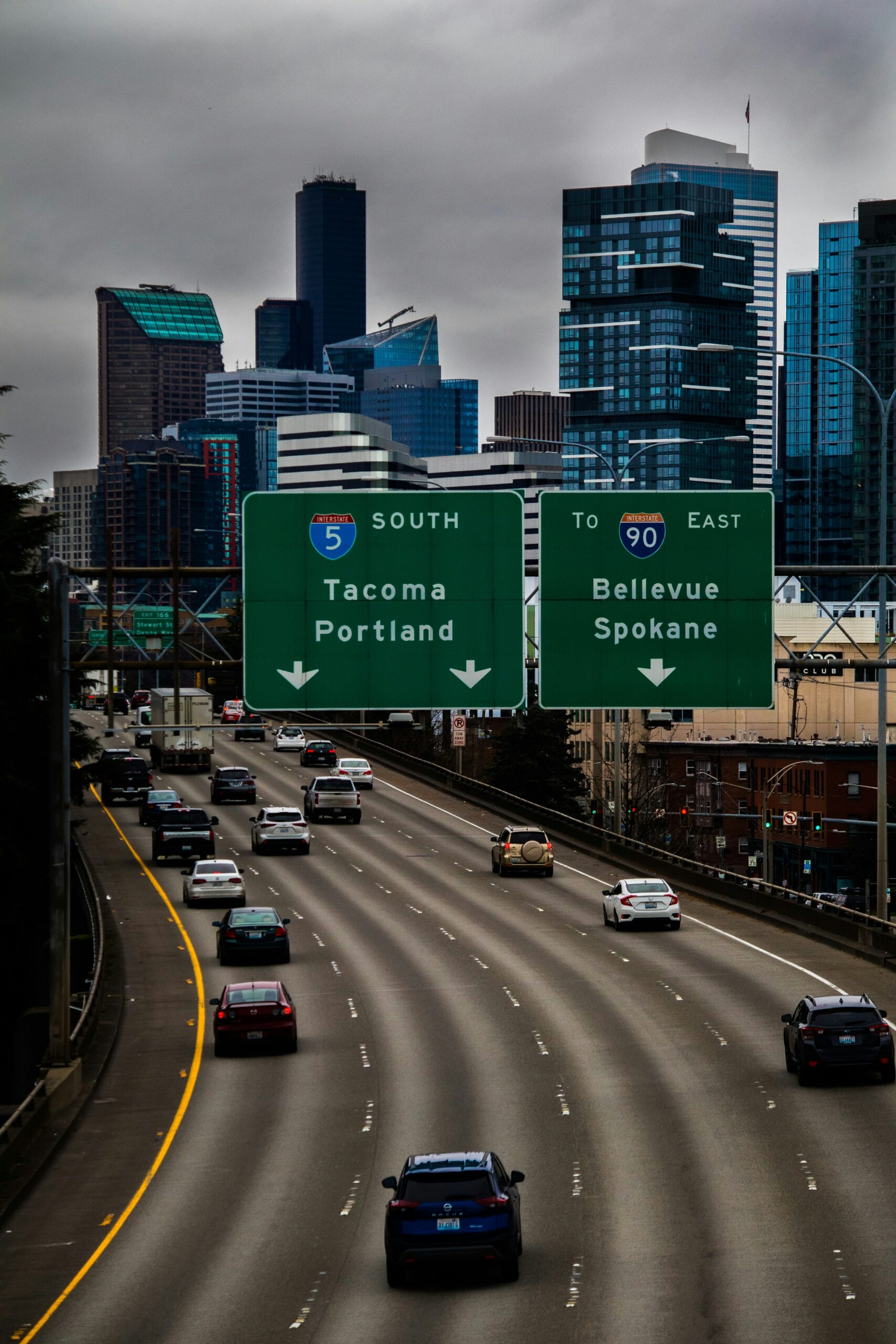Washington state’s transportation budget — like its operating-budget — has a bumpy road ahead as lawmakers face a multi-billion-dollar shortfall in the coming biennia.
State Sen. Marko Liias, chair of the upper chamber’s transportation committee, puts the transportation-deficit estimate at $4 billion over the next six years.
McClatchy spoke with Liias ahead of Monday’s release of the Senate transportation budget proposal.
Much of the transportation revenue problem is rooted in a declining gas tax, Liias said. Costs have risen faster than inflation, partly due to pandemic disruptions and difficulties with the supply chain.
“The cost of building or repairing a mile of roadway has gone up much faster than the cost of groceries and other things we’ve seen,” the Edmonds Democrat said. “Because of the way we fund transportation, revenue is declining.”
Washington’s gas tax
As people drive more fuel-efficient and electric cars, revenue from the state’s gas tax has dropped, Liias said. Employees also are telecommuting more frequently, thanks to a shifting work culture post-pandemic.
Liias said there’s about a $1 billion shortfall on a $15 billion budget over the course of the next two years. That gap is expected to grow, and over the next six years, the state is bracing for a $4 billion deficit across those biennia.
“If we want to close the gap in the budget over six years, it may mean pausing a project,” Liias said.
The senator told KING 5 in September that projects could be delayed because of the deficit.
Speaking with McClatchy, he said examples of such pauses could include improvements being made on Interstate 5 at Joint Base Lewis-McChord. In Tacoma, he said, there’s the Puget Sound Gateway connecting the Port of Tacoma to Highway 167. Ongoing construction in Fife, at Snoqualmie Pass and the North Spokane Corridor also could be affected.
The latest revenue forecast for the state’s operating budget showed projected collections dropping $845 million from the previous outlook in November. But the transportation-revenue situation has somewhat improved.
“In some sense it’s reassuring that we don’t have more red ink like the operating budget did, but if you look at September to now, we still are down some measures,” Liias said. “It felt like good news, but not great news, because we still are projecting that the gas tax is declining.”
Washington has a sort of pay-as-you-go model, Liias said: The more a person drives, the more they pay the gas tax. But even though it’s a good thing that fuel efficiency has led to fewer emissions, it also means that lawmakers need to brainstorm ways to keep funding the system.
One solution could be recalibrating the gas tax to account for inflation, Liias said.
“It could be different funding tools; [House Transportation] Chair Fey has proposed a road-usage charge,” he said. “It also could be other fees, or it could be tolls. There’s a number of things we could use that would help folks, as they use the system, contribute to its upkeep.”
Liias’ hope?
He wants to see the state stick with the use-more, pay-more model. Proponents say it makes sense for someone driving 20,000 miles annually to pay more than someone else logging 2,000 per year: “I think that basic fairness is a principle that we want to continue to rely on.”
Trump administration
Washington’s transportation leaders are also bracing for potential challenges coming from the federal government.
Liias said that federal funding needed to complete projects could be at risk. Examples include the I-5 bridge replacement across the Columbia River between Portland and Vancouver that’s counting on about $2 billion in federal grants.
“We have real questions about: Is the Trump administration going to yank back federal funding because Washington is a blue state? Are they going to try and punish us for having a commitment to women’s health or a commitment to gender-affirming care?” he said. “That’s a real concern out there.”
Another major point of concern: tariffs. Much of Washington’s transportation infrastructure depends on materials from outside the state and, at times, from other countries. Tariffs on China, Canada and Mexico could further drive up costs and make projects even pricier, he said.
The state will soon field bids for new ferries, Liias noted, which use a lot of imported steel.
Budget writers are attempting to build in some wiggle room to help account for the unknown.
“As I tell people, that’s why the Legislature meets every year,” Liias said. “We’ll come back next year and deal with whatever the circumstance is that the Trump administration has thrown in our laps.”
Possible transportation reductions
The state’s transportation budget covers a variety of transportation-related agencies. While the Washington State Department of Transportation is the largest, others include the Washington State Patrol and Department of Licensing.
Liias said lawmakers are trying to avoid cuts at the State Patrol given the ongoing traffic-safety crisis.
“It does mean at the Department of Licensing I predict we probably will see some reductions there, which will mean slightly longer wait times when people go to offices,” he said.
Looking ahead the state must invest more in preserving its existing, aging system, Liias said, adding that the state is funding less than half of its preservation needs.
That’s meant there are bridges with holes in them, plus crumbling overpasses, he said. And Washington is also facing a 30-year high in traffic fatalities, many of whom were bicyclists and pedestrians, illustrating the need for improved infrastructure safety.
Preservation, maintenance and safety will be key investment priorities, Liias said.
The Democrat highlighted a bill he sponsored that recently passed out of the Senate which would pave the way for partnerships with private companies, speeding up delivery on transportation projects. It’s how Virginia built nearly 30 miles of toll lanes over a couple years, as stated in a news release, and how Pennsylvania repaired close to 20% of its poor-condition bridges in four years.
“In transportation, time is money,” Liias said. “The faster we build projects, the lower we’re exposed to inflation and those cost uncertainties.”
Kirk Hovenkotter, executive director of the Transportation Choices Coalition, noted that freeway projects are expensive — and that they keep getting pricier. Such mega-projects include the North Spokane Corridor, the Puget Sound Gateway Project and the interstate bridge replacement.
“They’ve gotten more expensive, especially since the pandemic, and these highway expansions make up the most significant chunk of our transportation spending in WSDOT’s budget — over 33%,” Hovenkotter said.
Many freeway expansions were planned 25 to 30 years ago, Hovenkotter said. He hopes lawmakers will reevaluate how they spend transportation dollars, particularly given the looming federal uncertainty.
He also asked: Are transportation investments that were planned during the second Clinton or first Bush administrations good investments for 2025? Will they help Washington meet its climate goals?
“Are they going to meet our community goals? Are they going to make it easier to get around for people who can’t drive, like 25% of Washingtonians?” Hovenkotter asked. “I think we really need to take a hard look at what we’re spending our dollars on and really see if that’s meeting our needs.”
Source: The Olympian

